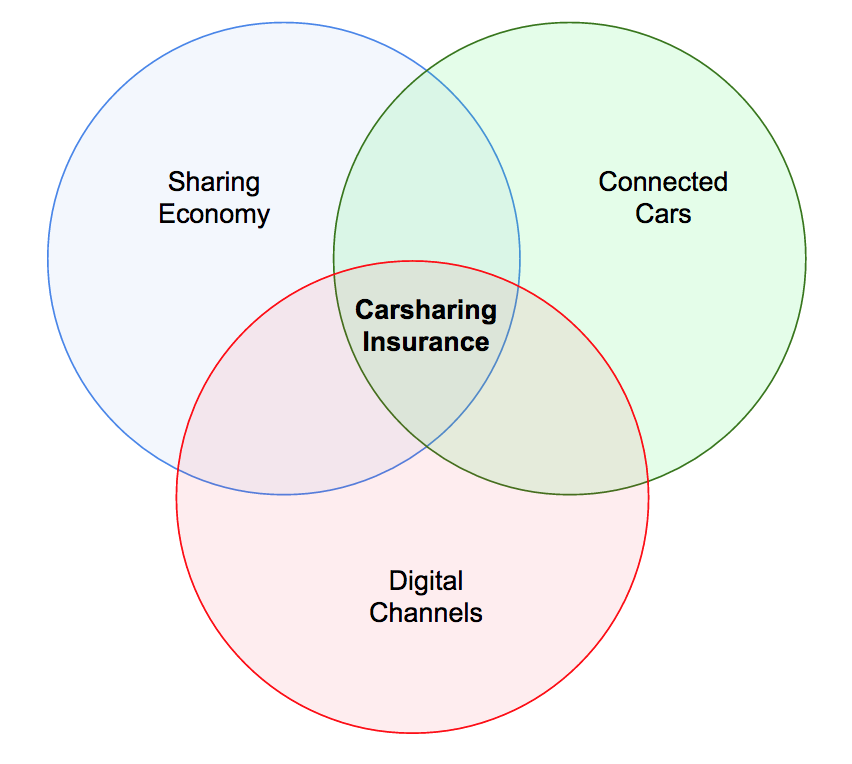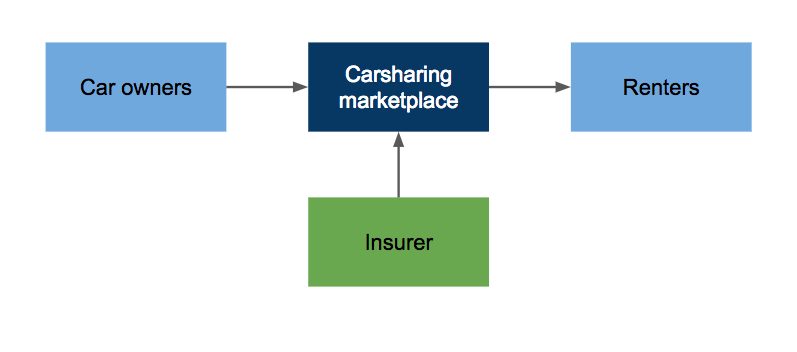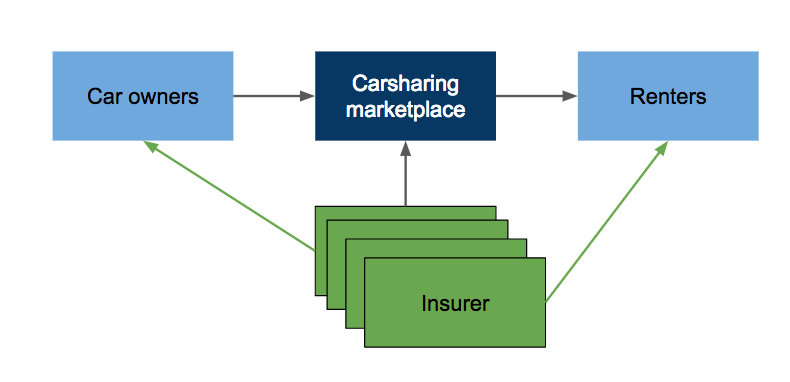The insurance industry has been ripe for disruption for some time now.
Chris McCann put it well in his analysis of the insurance startup ecosystem. Over the last few years, numerous trends have been converging to shake up the centuries-old industry: new sales channels, new data sources, new products to insure, and even new insurance structures.
The result has been billions of dollars invested in InsurTech startups. The big insurance companies themselves, in a quest to stay relevant, have committed $1 billion to invest in tech startups, according to the Financial Times.
Over my last four years as Director of International at Turo, I've seen the need for disruption firsthand. Turo is the leading car-sharing marketplace, enabling regular car owners to rent out their cars. Insurance is a critical pillar of this model; both car owners and travelers need to be protected during their rental period. As car-sharing has gained popularity, and the need for insurance with it, the carsharing insurance model that was slapped together in carsharing's early days needs to evolve. It's time to redesign from scratch.
The Carsharing Insurance Landscape Has Evolved
Three megatrends, sharing economy, connected cars, and a proliferation of price comparison digital channels, have contributed to a need for a new model of carsharing insurance. Moreover, all of them point to its increased importance and strong growth in the future.

Sharing Economy
While Uber and Airbnb are the poster children for the Sharing Economy, other segments like carsharing, are growing very fast across the world. Companies like Turo have raised large sums of capital and are on their way to building massive global marketplaces that will be larger than traditional car rental companies.
For the first time in history, customers have an affordable and reliable alternative to ownership, which Millennials have found appealing. The new generation wants access, not ownership. A study published by Goldman Sachs found that 60% of Millennials prefers to rent instead of buying products.
Connected cars
The car industry, too, has been transformed by technology. Venture capitalists have invested over $1 billion in startups working on connected cars. Tech companies and car manufacturers have made progress in making cars smarter and connected.
Andre Haddad, Turo’s CEO, wrote a great article that summarizes the changes in the connected car ecosystem. Increasingly large volumes of data about the cars are available to be used by many parts in the ecosystem, including insurance.
Digital Channels and price sensitivity
The advent of internet and price comparison websites (PCW) is turning some types of insurance, including auto, into a commodity. For instance, PCWs have become so popular in the UK that 77% of customers used PCWs to switch car insurance. As a consequence, price has now become the main decision factor for insurance. According to a study from SessionCam, 76% of customers mentioned good deals as their biggest motivator when choosing a policy. Only 22% quoted brand awareness as important.
Carsharing Insurance Today: A Closed System
Today, the carsharing insurance ecosystem is closed. Since carsharing is an incidental channel for insurance sales, large insurance companies partner directly with the marketplaces to have the monopoly on the insurance offered to customers. For instance, Intact has partnered with Turo in Canada, Drivy with Allianz in Europe, SocialCar with AXA in Spain, etc. The system looks like this:

This model has some advantages:
- Simplicity: customers have simple insurance choices integrated on the experience. Also, the marketplace only deals with one insurer per country, which reduces operational complexity.
- Trust: the association with a trusted insurance brand provides credibility to marketplaces.
- Access to car owners: insurers may promote the marketplace to their customers as a way to increase premiums.
However, this closed model also has important disadvantages:
- Dependency on one insurer: the marketplace is tied to one insurer for at least one year and can’t improve pricing and coverage in an ongoing basis.
- Monolithic view of risk: since one insurer underwrites all risks, the coverage isn't optimized for different profiles (e.g., driver's age, car type, etc)
- Limited co-marketing: co-marketing opportunities are limited to the insurer’s user base.
- Limited product resources: the marketplace will naturally focus on top line growth and prioritize other projects higher than insurance, which could limit innovation and the learning potential.
This closed model has been working well, while scale is relatively small. However, it will become obsolete as the industry grows and the operations become more complex. A new model that offers a superior customer experience while creating more value for both insurers and marketplaces should be introduced.
The Future is Open
In my view, carsharing marketplaces, and indeed sharing economy marketplaces in general, can benefit from open platforms, which integrate multiple insurers that bid in real time for each reservation, based transaction-specific risk. Factors like driver's profile, type of car, location, duration, telematics-based driver behavior, amongst others, will influence the price insurers charge. Each insurer creates a bidding strategy based on their goals and risk appetite.
Here's an example of how this would work. Jean, a 29 year old renter from Paris, France, wants to rent Mary’s Ford Mustang 2012 in Los Angeles. He is a verified driver and the marketplace knows his profile (age, risk, past claims, etc). At the time Jean creates the request, the marketplace sends this information to insurers connected to the platform and retrieve back quotes based on the risk profile (non-US driver, under 30 years old, safe driver, etc). All the complexity is kept in the background and Jean only sees the final premium and the name of the underwriter.
The open platform would also allow insurers to design carsharing products and offer them directly to customers, outside the marketplace. For example, they could sell add-ons to their annual insurance policies, so that owners could rent out their cars to other people. In those scenarios, owners could pay lower commissions to the carsharing marketplaces, as they would no longer need to use the marketplace-provided insurance policy.
The ecosystem would look something like this:

This model has many advantages over the existing closed carsharing insurance model:
- Better pricing: it’s likely that the users will get the best deal based on the matching between risk of the transaction and insurer's appetite.
- Scalability: having a pool of different insurers will help cover many risk profiles (geography, high value car, classics, age, etc), allowing the marketplace to accept more customers.
- Customer acquisition: insurers will have incentives to promote the carsharing policy to their customers, which could become an important acquisition channel for marketplaces.
The main disadvantage is the high complexity in the ecosystem, which requires improvements in the technology and in the operations. However, this problem creates an opportunity for InsurTech startups that will build the infrastructure required to make this system work.
While it's still early, the future is promising. Different stakeholders should work together to empower customers anywhere in the world who want to share their cars.
I hope this article starts a conversation around the future of carsharing insurance and inspires actions that will improve the ecosystem. Please feel free to reach out to our Tint protection pros to keep the conversation going.


